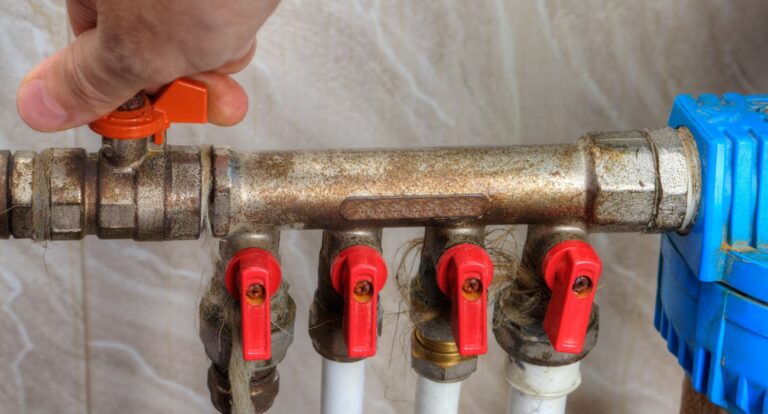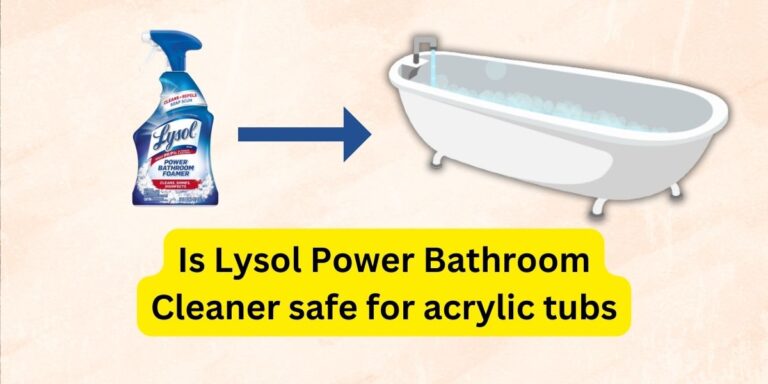Can Epsom Salt Damage Your Bathtub?
Epsom salt baths are a popular home remedy for soothing sore muscles and relaxing the body. However, some people wonder if using Epsom salts can actually damage bathtubs over time. Below we’ll explore what Epsom salt is, how it interacts with different bathtub materials, tips for using it safely, signs of potential damage, and ways to prevent issues.
What is Epsom Salt?
Epsom salt is not actually a salt, but a naturally occurring pure mineral compound of magnesium and sulfate. It’s commonly used to help relieve muscle soreness and tension when dissolved in bath water, serving as a muscle relaxant.
Some key facts about Epsom salt:
- Chemical formula: MgSO4•7H2O
- Grains feeling due to crystalline structure
- Easily dissolves in water
- High concentrations in the Epsom spring in England (where it gets its name)
- Available at most drugstores and grocery stores for low cost
The reason Epsom salt helps relax muscles is its high content of magnesium, which is absorbed through the skin when bathing and aids muscle recovery. Sulfates may also have detoxifying effects.
Can Epsom Salt Damage Your Bathtub?
Epsom salt can damage bathtub surfaces, but only with prolonged, recurring exposure over time. Using Epsom salt sparingly and cleaning thoroughly after each use will prevent buildup that could etch or scratch the tub. Limiting salt baths to once a week or less, using minimal amounts needed, and rinsing completely prevents long-term damage.
The minerals in Epsom salt are generally gentle and non-toxic when used appropriately. Thousands of people take Epsom salt baths without any major issues. However, there are a few considerations regarding bathtub safety:
- Can corrode some materials – While Epsom salt itself is non-corrosive, it does dissolve into the tub water. This water can potentially damage some bathtub materials with prolonged, repeated exposure.
- May scratch surfaces – Undissolved Epsom salt grains could physically scratch polished and glossy surfaces over time if not dissolved properly before bathing.
- Concentration matters – Very concentrated Epsom salt solutions may have increased interactions with tub materials. Moderation is key for safety.
So while Epsom salt baths are generally considered safe, steps should be taken to minimize risk of corrosion, scratching, and other gradual damage to your bathtub.
How Does It Interact with Different Bathtub Materials?
Not all bathtubs are made the same, so it’s important to understand how Epsom salt may affect different materials:
- Fiberglass – The gel coat finish on fiberglass tubs can become dull, faded, and scratched by prolonged Epsom salt exposure. The scratches make deterioration worse over time.
- Acrylic – Similar to fiberglass, acrylic bathtubs can become scratched and hazy looking with recurring use of Epsom salts.
- Porcelain enamel steel – The glossy porcelain finish is also vulnerable to dulling and scratching. Rusting is also a risk if the porcelain is compromised.
- Cast iron – While durable, the enamel coatings on cast iron tubs can potentially be affected by Epsom salt solutions. Rust is a major concern if damage occurs.
- Stone resin – Natural and composite stone materials are less prone to damage, but may still get etched and eroded over many salt-water exposures.
In general, materials that have a painted, glossy or enamel finish seem most vulnerable to Epsom salt damage over time.
Using Epsom Salt in the Bathtub Safely
To enjoy the benefits of Epsom salt baths while minimizing the risks of bathtub damage, here are some tips:
Proper Dosage and Frequency
When it comes to Epsom salt usage, moderation is key for safety:
- Follow package directions – This is usually 1-2 cups per standard bathtub, dissolved completely before getting in.
- Limit baths to 2-3 times per week – Daily exposure could increase damage, so give your tub a break between soaks.
- Consider lower concentrations – If worried about your tub, try using less salt, like 1/2-1 cup instead of 2 full cups.
Too much Epsom salt too frequently may start interacting negatively with your bathtub. Pay attention to dosage and don’t overdo it.
Mixing and Dissolving It Properly
It’s important that the Epsom salt fully dissolves in the bath water, rather than remaining as solid granules:
- Run the bath first – Fill your tub with several inches of hot water before adding salt.
- Stir thoroughly – Use your hand or a spoon to stir continuously until no grains remain.
- Give it time – Continue stirring for 2-3 minutes to ensure it dissolves completely.
- Check the water – Feel with your hands that no granules remain before getting in the tub.
Following these steps prevents undissolved Epsom salt from scratches or sticking to your tub’s surface when bathing.
Cleaning Afterwards
After an Epsom salt bath, be sure to clean your tub properly:
- Rinse tub thoroughly – Drain the salty bath water completely, then rinse tub walls with regular water.
- Use mild cleaner if needed – For stubborn salt residue, use a gentle soap and water solution. Avoid harsh chemical cleaners.
- Dry with soft cloth – Prevent water spots and mineral buildup by drying the tub completely.
- Inspect for scratches – Periodically check your tub closely for any small scratches or dull spots that may be forming.
Proper rinsing and drying will prevent salt residue buildup that could compound over many baths.
Read this guide if you don’t know What Do Epsom Salts Baths Do?
Signs of Bathtub Damage from Epsom Salt
With routine use of Epsom salt over months or years, you may start to notice some warning signs of bathtub damage:
- Dull, etched areas on the bottom surface of the tub
- Visible scratches in the glossy enamel, fiberglass or acrylic
- Faded, cloudy patches forming on walls or bottom
- Rust spots around iron or steel tubs
- Stubborn white scale that keeps reappearing
If you notice any of these issues, it may be time to cut back on the Epsom salt exposure before more significant damage occurs.
When to Be Concerned?
Here are a few scenarios that should cause concern about using Epsom salt in your tub:
- Acrylic/fiberglass dulling – Once glossiness fades and scratching occurs, the surface deterioration often accelerates.
- Etching and pitting – If you notice etching or pits in enamel, immediate action is needed to prevent further damage.
- Rust spots – Any signs of rust mean the tub’s protective finish has been compromised, risking leaks and more rust.
- Ongoing white scale – Hard-to-remove white mineral residue that reappears quickly after cleaning.
If you notice any of these issues, consider refinishing or replacing your tub sooner rather than later. The damage will likely get exponentially worse if Epsom salt exposure continues.
Protecting Your Bathtub When Using Epsom Salt
You can still safely enjoy the therapeutic benefits of Epsom salt baths with a few preventative measures:
- Limit frequency to 2-3 times per month – Daily or weekly may be too much for your tub over time.
- Rinse tub after each use – Prevent mineral residue buildup that could abrade the surface.
- Wipe dry with soft cloth – Reduce scratches and water spots that could degrade the finish.
- Use minimal amount needed – Don’t overdo it; 1 cup per bath may be plenty.
- Consider a tub liner – Protective liners shield surfaces from direct contact with salts.
Being deliberate and moderate with Epsom salt usage will help maximize your bathtub’s lifespan.
Here is another guide: Can You Use Epsom Salt In A Hot Tub
Alternative Relaxing Bath Options
If you are worried about potential damage, there are other soothing ingredients you can use in the tub instead:
- Baking soda – Soothes skin and is non-abrasive.
- Liquid bath oils – Hydrating options like jojoba, coconut, avocado oils.
- Epsom salt alternatives – Try magnesium flakes, dead sea salt, Himalayan salt.
- Essential oils – Aromatic oils like lavender, eucalyptus, and rosemary.
- Oatmeal – Calming for irritation and itchiness. Place in a cloth bag.
- Whole milk – The proteins are soothing for dry skin. Add 1-2 cups.
Switching up your bath additives can give your tub a break while still providing relaxation.
Key Takeaways
- Epsom salt can potentially damage bathtub surfaces with repeated, prolonged exposure. However, risks are low with moderate, proper use.
- Materials like fiberglass, acrylic, and porcelain enameled steel are most prone to damage from salt solutions over time.
- Limit salt amount to 1-2 cups per bath maximum and frequency to 2-3 times monthly. Ensure it dissolves fully before bathing.
- Signs of damage include dulling, scratches, rust, and etched surfaces. Refrain from Epsom salt baths if you notice these issues.
- Alternatives like baking soda, oils, oatmeal, and milk can provide soothing relaxation without harming your bathtub.
Be mindful of your bathtub’s material and condition when using Epsom salt. With some care, you can safely reap its relaxing benefits. If damage becomes a concern, try limiting use or exploring other calming bath additives instead.
FAQs
Can epsom salt actually damage bathtubs?
Yes, over time repeated Epsom salt use can potentially damage bathtub surfaces. It may cause dulling, scratching, etching, and erosion especially on materials like fiberglass, acrylic, and enamel.
How often should you use Epsom salt in the bath?
Limit Epsom salt baths to 2-3 times per month maximum. More frequent use increases the risk of gradual damage to your bathtub over time.
What’s the best way to use Epsom salts safely?
Dissolve 1-2 cups fully in bath water before getting in, rinse tub thoroughly after, and wipe dry to prevent residue buildup. Be mindful of your tub’s material.
Can I use Epsom salt if my tub is acrylic?
Yes but limit use to prevent dulling and scratching. Acrylic is more vulnerable than materials like stone resin. Be cautious and gentle.
What happens if Epsom salt is not dissolved properly?
Undissolved grains can scratch surfaces and stick to tub walls. Always stir completely until no granules remain before bathing.

Amanda has been designing and installing bathtubs for over 15 years. She first got interested in the bathtub industry while working as an interior designer right after college. During her years as a designer, Amanda was frustrated by the lack of high-quality, unique bathtub options for her clients. This passion led her to start her own bathtub website in 2009.







